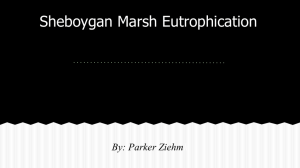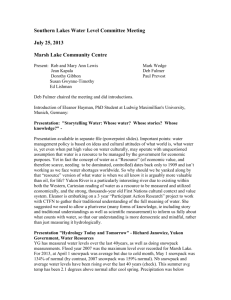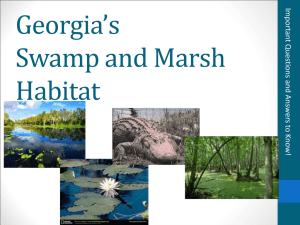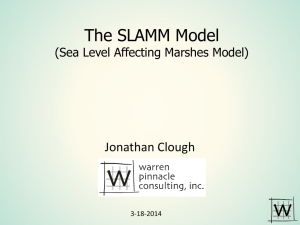Royal Haskoning PPT template
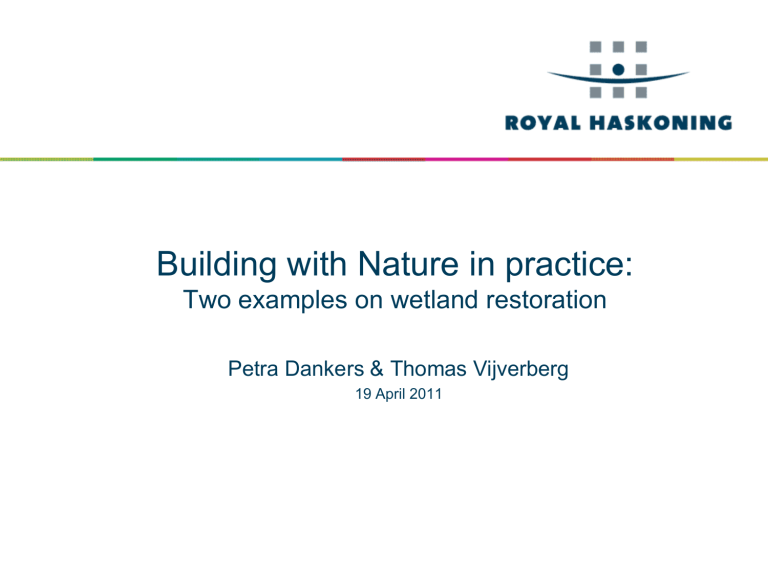
Building with Nature in practice:
Two examples on wetland restoration
Petra Dankers & Thomas Vijverberg
19 April 2011
Introduction
Wetland = areas of marsh, fen, peatland or water , natural or artificial , permanent or temporary , water that is static or flowing , fresh, brackish or salt .
Two examples of Building with Nature in practice
Creating new wetland
Lake Marken marsh project
Wetland restoration
Managed realignments
Perkpolder project
Creating new wetland – focus on lakes
Why? degeneration of lake systems creating stepping stone creating habitat nature compensation
Example: Case Markermeer
Lake Marken
- high turbidity
- no interesting ecosystem
While the lake would be suitable as
- stepping stone
- habitat for fresh water flora and fauna
- high quality recreation and living area
Example: case Lake Marken
NMIJ project – More natural Lake Marken and
Lake IJ goal : developing measures to create a robust ecosystem and climate proof water system measure : enlarging habitat diversity by creating a large fresh water marsh (wetland)
Task : give advice on building/creating new wetland
BwN: allow natural processes to shape and develop the wetland (no polder, no dikes preventing water inflow, open boundaries)
Creating new wetland
What is a large fresh water marsh?
Step 1: reference situations
Step 2: translate to Lake Marken situation
How do you make it?
Step 1: decide on species, size and material
Step 2: start building
What is a large fresh water marsh?
What is a large fresh water marsh?
What is a large fresh water marsh?
Shallow water, creeks, (10%)
Mud and sand flats (10 – 20 %)
Water and gently sloping shores with abundant water plants
(10 – 20%)
Sedges (biezen) and phragmytes (riet) in shallow water (up to
50%)
floodplains (5%)
Dynamic with pionier vegetation
Erosion and sedimentation
What is a large fresh water swamp?
How do you make it?
Which species?
Which size?
Which material?
Which species and size?
400 a 500 ha to have 75% of marsh birds
Building block plas dras
Which material
Material from Lake Marken
- top layer is holocene material (mud, clay, peat)
< 10-15 m is sand (building sand)
But how do you build with mud?
is it stable, does it stay in place?
does it set and how much?
how much does it consolidate?
when can things start growing?
when can you walk on it?
PILOT LAKE MARKEN MARSH
Pilot Marsh
Ecology is leading but engineering is tested
(because of time frame)
Laboratory in Lake Marken of a few ha.
Testing consolidation, construction, behaviour and suitability for developing marsh/swamp pioneer vegetation
Result : in 2015 advice on creating large marsh in Lake Marken
